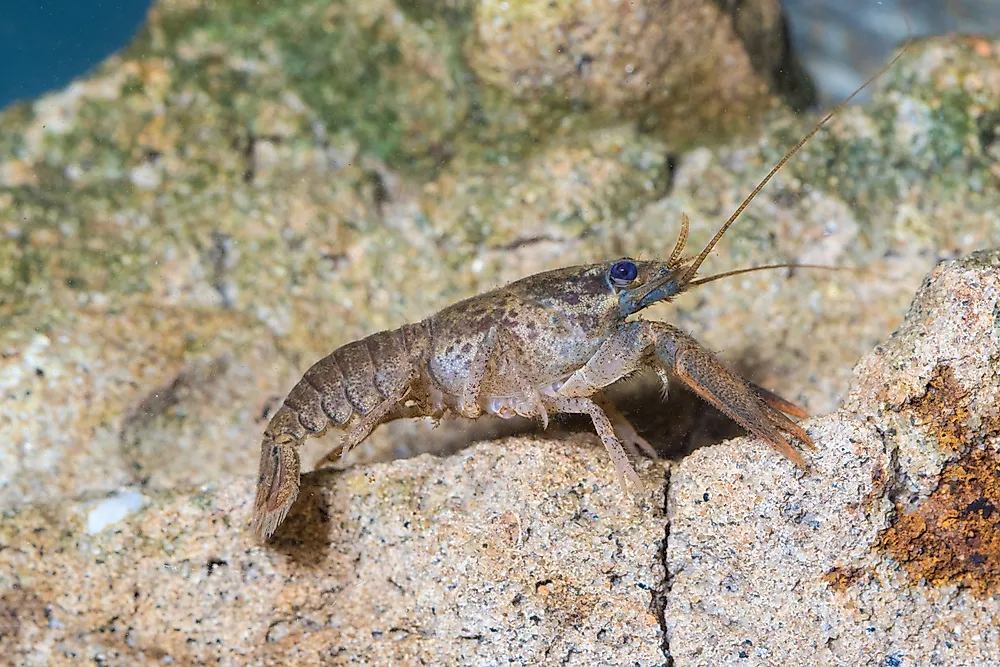Are Insects and Crustaceans Related?

Both insects and crustaceans form dominant animal groups in the aquatic and terrestrial systems. Hexapods (insects) and crustaceans fall under different taxonomic classes. However, both insects and crustaceans are under the same phylum Arthropoda. In a recent study, it was revealed that insects were evolutionary derived from crustaceans. This relationship between crustaceans and hexapods is outlined in the clade Pancrustacea. There is an ongoing debate on the relationship between insects and crustaceans. However, researchers have come to a consensus that insects evolved from crustaceans’ ancestors.
Common Ancestors
The closest identified crustacean relative of insects is Remipedia. Remipedes are relatively big predators that bear biramous legs. Superficially, the creatures may appear unrelated to insects. However, a study on the genetics, skeletal morphology, and brains of Remipedes closely link them to insects.
Similarities Between Crustaceans and Insects
Other aspects examined in trying to establish the relationship between insects and crustaceans include:
Exoskeletons
All arthropods, both insects and crustaceans, produce a protective exoskeleton. However, as a requirement to function in the different aquatic and terrestrial lifestyles, the insects and crustaceans exoskeletons differ morphologically. The exoskeleton of both insects and crustaceans contains chitin and other similar cuticular proteins. The exoskeletons however differ in the extent to which they combine calcium carbonate and in their composite makeup.
Respiration and Oxygen Transport
A fundamental aspect in animal physiology is the use of oxygen in metabolism as well as the functioning of respiratory system. While studying the development of respiratory structures, it was revealed that hemocyanin, which is the main respiratory protein in crustaceans is also present in insects. This is the main evidence that insects evolved from the ancestors of the modern day crustaceans.
Cardiovascular and Immune Systems
In both insects and crustaceans, there is a shared need to guard themselves against pathogenic organisms. A recent research was conducted on the immune function and how it is integrated with the circulatory system in both insects and crustaceans. It was discovered that the circulatory functions in crustaceans and insects are controlled by the same peptides.
Endocrinology
All arthropods, insects and crustaceans, possess an exoskeleton that must be shed as the animal grows. The molting process is regulated by ecdysteroids. A juvenile hormone, methyl farnesoate, which aids the molting process, is known to be present in insects. The same juvenile hormone was identified in crustaceans in the 1990s. The hormone regulates the molt nature in crustaceans and regulates reproduction just as in insects.
Limb Regeneration
In both insects and crustaceans, limb regeneration takes place. This is the replacement of lost limbs. Limb regeneration is achieved through the molting process.
Other Similarities
Both insects and crustaceans have compound eyes. In addition, crustaceans and insects have pairs of antennae used for sensing. Many species of crustaceans and insects are also food to human. Most people in the tropics traditionally use insects and crustaceans as food. The insects used as food include grasshoppers and spiders in Cambodia while crustaceans include lobsters and crabs. Additionally, though crustaceans live in water, some like wood lice and fish lice are terrestrial as most insects.
Apparently, both insects and crustaceans have numerous similarities mainly in the physiological functions. This makes it clear that insects and crustaceans are related.











